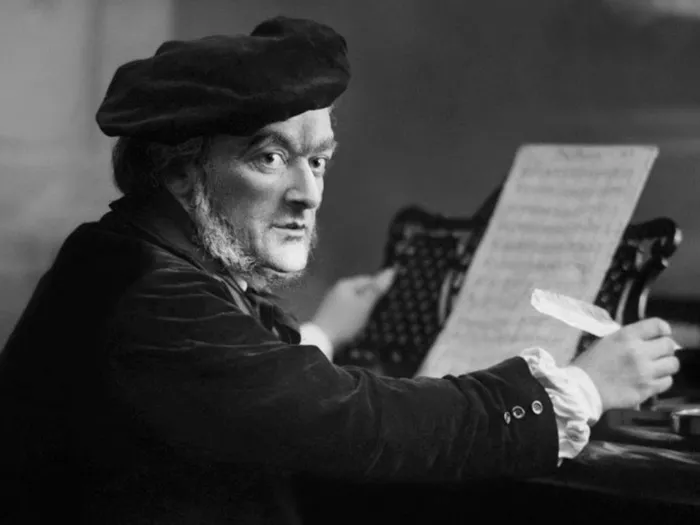Classical music, often associated with elegance and sophistication, rarely sparks controversy. However, a classical music channel receiving an “R” rating is unusual and noteworthy. This article delves into the reasons behind this rating, examining various factors and perspectives.
I. Understanding the “R” Rating
An “R” rating typically indicates restricted content, suggesting material unsuitable for children under 17 without parental guidance. This rating is usually reserved for movies with explicit content such as violence, language, or sexual material. Applying this rating to a classical music channel raises questions and eyebrows.
II. Historical Context
Classical music has a long history of being seen as highbrow and culturally enriching. Traditionally, it’s been considered safe for all audiences, including children. However, some pieces contain themes or elements that might be considered mature by today’s standards. Understanding the historical context is crucial to unpacking the rating.
1. Examples of Mature Content in Classical Music
a. Operas
Operas like “Carmen” by Bizet and “Tosca” by Puccini involve themes of passion, betrayal, and murder. The dramatic narratives and intense emotions portrayed in these works can be quite mature.
b. Ballets
Ballets such as “Swan Lake” and “The Rite of Spring” also contain elements that might be considered adult. The latter, in particular, caused a scandal at its premiere due to its raw and primal themes.
c. Symphonic Works
Some symphonic works, like Shostakovich’s Symphony No. 13 (“Babi Yar”), address historical events and tragedies. The weighty themes and the context of such works might influence the rating.
III. Other Reasons
1. The Channel’s Programming
The classical music channel in question may have aired content that included mature themes. Certain operas and ballets, for example, contain narratives involving violence, tragedy, or adult themes. While the music itself might not be explicit, the accompanying visual performances or thematic context could contribute to an “R” rating.
2. Modern Interpretations and Productions
In recent years, modern interpretations and productions of classical works have pushed boundaries. Directors and choreographers often add contemporary elements, sometimes incorporating explicit content to make a statement or appeal to modern audiences. These interpretations can result in mature content that might not align with the traditional family-friendly image of classical music.
3. Influence of Visual Content
The channel might also feature documentaries or biographical films about composers, some of whom led tumultuous lives. These films might explore personal struggles, mental health issues, and other mature themes. For example, a documentary about Beethoven might delve into his battles with depression and alcoholism.
4. Viewer Expectations and Reactions
Viewer expectations play a significant role in this controversy. Audiences generally expect classical music channels to be safe for all ages. When programming deviates from this expectation, it can lead to backlash and calls for stricter content warnings or ratings.
5. Regulatory Standards
Regulatory bodies that issue ratings consider various factors, including the impact on young viewers. The channel’s content might have been scrutinized under these standards, leading to the “R” rating. Understanding the criteria used by these bodies is essential to grasp the reasoning behind the rating.
6. The Role of Education
Educational programming on classical music channels aims to enrich and inform. However, when dealing with mature themes, the line between education and explicit content can blur. The intent to educate about historical or thematic contexts might clash with content rating standards.
7. Audience Demographics
Classical music channels often cater to an older, more mature audience. This demographic might be more accepting of complex themes. However, channels still need to consider the broader audience, including families and younger viewers.
8. Parental Guidance and Responsibility
Parents play a crucial role in mediating content for their children. The “R” rating serves as a guideline, suggesting that parental discretion is advised. Informed parents can decide whether the content is appropriate for their children, balancing exposure to cultural enrichment with protecting them from mature themes.
9. Industry Reactions
The classical music industry, including musicians, directors, and educators, might have varied reactions to the rating. Some might support the inclusion of mature themes as an artistic choice, while others could argue for maintaining a family-friendly approach.
10. Ethical Considerations
Ethical considerations come into play when deciding what content to air. The channel must weigh the importance of artistic expression against the potential impact on viewers. This balance is delicate and often subjective, leading to diverse opinions on the appropriate course of action.
11. Comparisons with Other Genres
Other music genres, like rock or rap, often face scrutiny for explicit content. Comparing classical music to these genres highlights the disparity in how different types of content are perceived and rated. While explicit language and themes are common in some genres, classical music is typically viewed through a different lens.
IV. Future Directions
The “R” rating might affect the channel’s viewership and reputation. Some viewers might appreciate the candid approach to mature themes, while others could be deterred. The channel must navigate these dynamics, potentially adjusting programming to find a balance.
Looking ahead, the classical music channel might adapt its programming to address the rating. This could involve clearer content warnings, adjusting the timing of certain broadcasts, or even re-evaluating the inclusion of specific pieces. Viewer feedback will likely influence these decisions.
See Also: A Deep Dive into the Spiritual Essence of Classical Music
V. Conclusion
The “R” rating of a classical music channel is a multifaceted issue. The “R” rating for the classical music channel stems from a combination of mature themes in operas, ballets, and symphonic works, modern interpretations, visual content, and regulatory standards. Viewer expectations, parental guidance, and industry reactions also play significant roles. The channel must navigate these complexities to balance artistic expression with audience sensitivity. As the landscape of classical music broadcasting evolves, ongoing dialogue and adaptation will be key.

